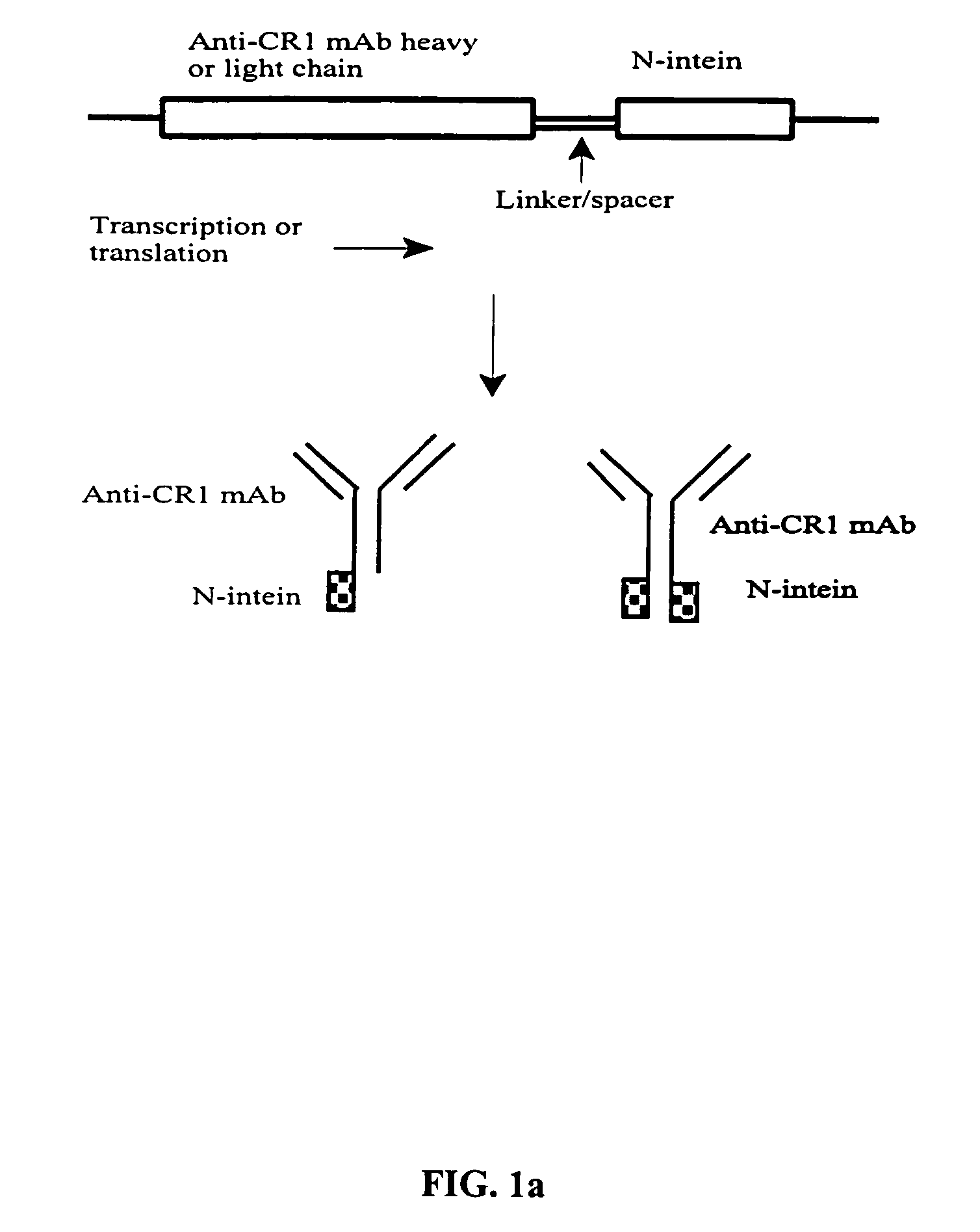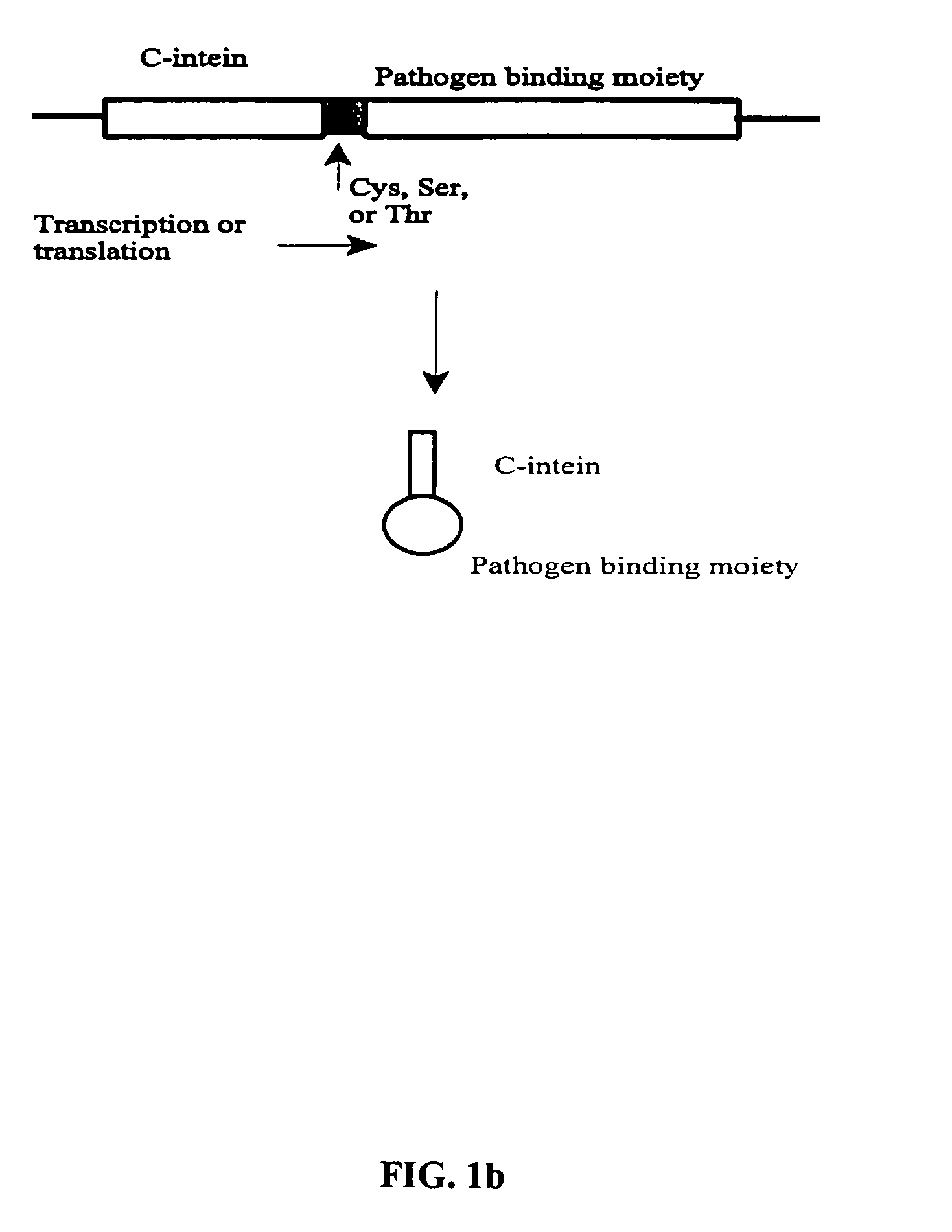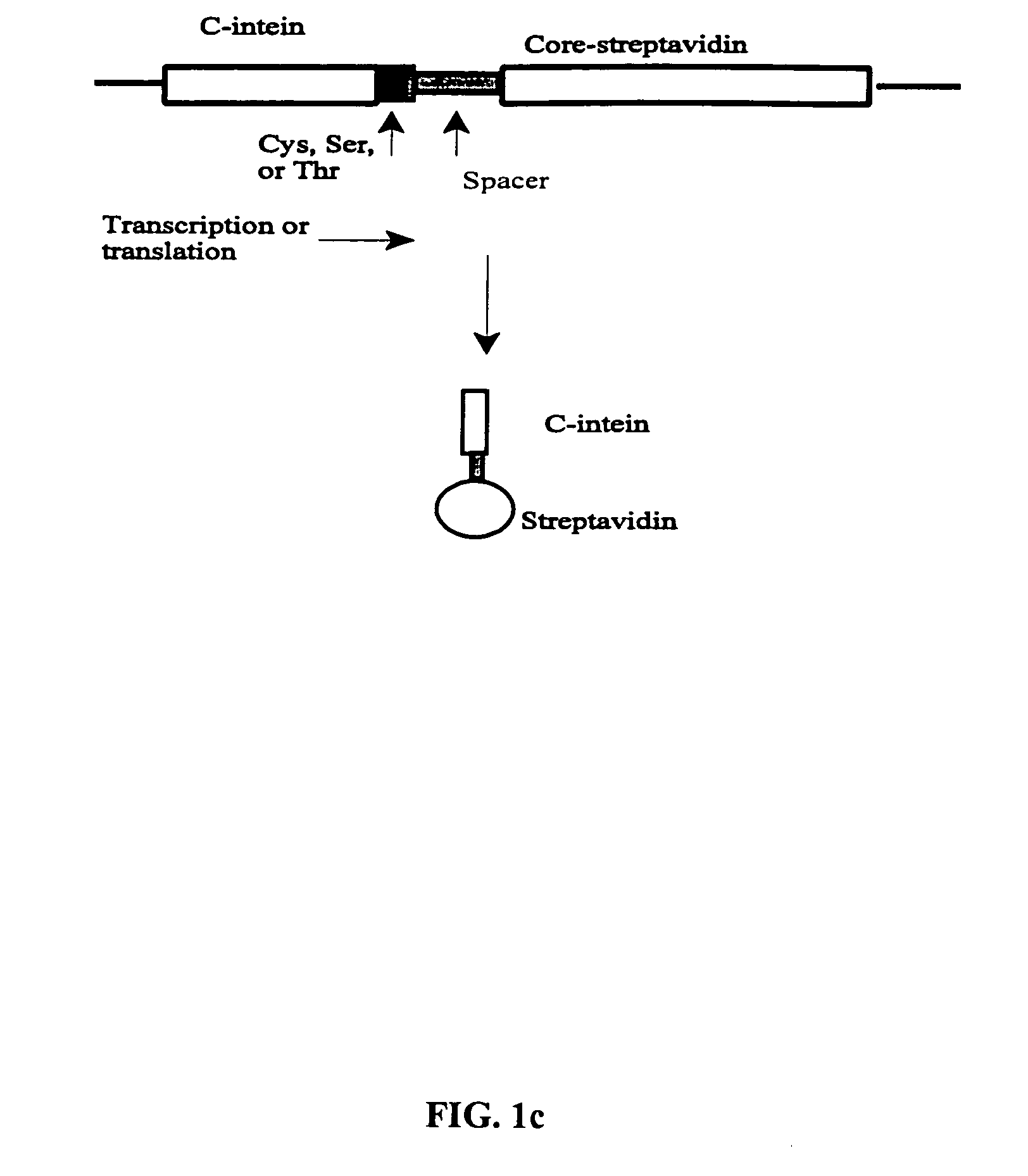Method of producing biospecific molecules by protein trans-splicing
- Summary
- Abstract
- Description
- Claims
- Application Information
AI Technical Summary
Benefits of technology
Problems solved by technology
Method used
Image
Examples
Embodiment Construction
[0029] The present invention provides methods utilizing protein trans-splicing for producing bispecific molecules that bind both a C3b-like receptor, or its functional equivalent, and an antigenic molecule to be cleared from the circulation.
[0030] The N- and C-intein from a split intein system are linked to a C3b-like receptor recognition portion and an antigen recognition portion respectively. Subsequent reconstitution and trans-splicing reactions ligate the two antigen recognition portions and produce a bispecific molecule. The method for producing bispecific molecules using protein trans-splicing is site-specific, permitting the design and construction of bispecific molecules with particular structure and function(s). The invention also relates to methods of utilizing protein trans-splicing to ligate a C3b-like receptor recognition portion with an antigen recognition portion through a streptavidin-biotin or avidin-biotin linker. Although hereinafter, streptavidin is referred, it ...
PUM
| Property | Measurement | Unit |
|---|---|---|
| Wavelength | aaaaa | aaaaa |
| Affinity | aaaaa | aaaaa |
| Antigenicity | aaaaa | aaaaa |
Abstract
Description
Claims
Application Information
 Login to View More
Login to View More - R&D
- Intellectual Property
- Life Sciences
- Materials
- Tech Scout
- Unparalleled Data Quality
- Higher Quality Content
- 60% Fewer Hallucinations
Browse by: Latest US Patents, China's latest patents, Technical Efficacy Thesaurus, Application Domain, Technology Topic, Popular Technical Reports.
© 2025 PatSnap. All rights reserved.Legal|Privacy policy|Modern Slavery Act Transparency Statement|Sitemap|About US| Contact US: help@patsnap.com



